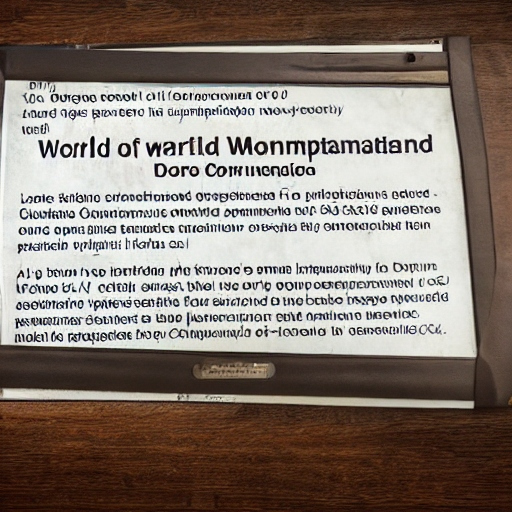🌐 In an increasingly data-driven world, the Internet of Things (IoT) stands as a transformative force. IoT empowers us to connect and harness data from an array of sensors and devices, opening doors to unparalleled insights and efficiencies. But how does this intricate web of technology operate, and why is it indispensable? In this post, we embark on a journey to unravel the pivotal roles, components, challenges, and solutions that constitute the IoT ecosystem, drawing insights from the authoritative NIST Special Publication 800-183. From ground-level sensors to cloud-based decision-making, we explore the layers of this technological marvel, shedding light on why IoT matters and how it’s reshaping our world.
IoT Ecosystem Components: Roles, Use Cases, and More
| Device | Role | Use Cases |
|---|---|---|
| 🌡 Sensors | Data Collection | Temperature monitoring, humidity sensing, motion detection, and more. |
| 📡 Aggregators/Ga… | Data Aggregation | Local data aggregation, protocol translation, edge computing. |
| 💻 Clusters/Edge … | Local Data Processing | Real-time analytics, anomaly detection, local control. |
| 📡 Communication… | Data Transfer | Wireless communication, cellular, Wi-Fi, LoRaWAN, Zigbee, NB-IoT. |
| ⚙️ Utility and Mo… | Device Management | Device management, firmware updates, power optimization. |
| 📊 Decision Making… | Analytics | Predictive maintenance, demand forecasting, quality control. |
IoT Protocols
IoT communication relies on various protocols for seamless data transfer. Here are some popular IoT protocols:
- MQTT (Message Queuing Telemetry Transport): Lightweight and ideal for low-bandwidth, high-latency, or unreliable networks.
- CoAP (Constrained Application Protocol): Designed for constrained devices and low-power networks.
- HTTP/HTTPS: Familiar for web developers, suitable for RESTful communication.
- LoRaWAN: Long Range Wide Area Network for low-power, long-range wireless communication.
- Zigbee: Low-power, mesh networking protocol commonly used in smart home applications.
- Z-Wave: Proprietary wireless protocol for smart home devices.
- Thread: Low-power, wireless mesh networking protocol.
IoT Standards
IoT standards play a crucial role in ensuring interoperability and security. Here are some notable IoT standards:
- Matter (formerly Project CHIP): An open-source, royalty-free standard for smart home devices, supported by major tech companies.
- Zigbee Alliance: An organization that develops and promotes the Zigbee wireless communication standard for IoT.
- Thread Group: An industry consortium that manages the Thread networking protocol for IoT.
Popular Open-Source Solutions
Open-source software plays a significant role in the IoT ecosystem. Here are some popular open-source IoT solutions:
- Eclipse IoT: An open-source community providing various IoT projects and tools.
- Node-RED: A flow-based development tool for visual programming of IoT applications.
- Mosquitto: An open-source MQTT broker for implementing MQTT-based communication.
- ThingsBoard: An open-source IoT platform for data visualization and device management.
Key Players and Technologies in IoT Ecosystem
- 🏭 Popular Vendors: Bosch, Cisco, Intel, AWS, Microsoft, and more.
- 🌐 Software: TensorFlow, MQTT, LoRaWAN, Azure IoT Hub, and others.
- 💡 Hardware Vendors: Raspberry Pi, Arduino, NVIDIA, STMicroelectronics, and more.
The IoT Landscape: Problems and Challenges
IoT is a complex ecosystem with several inherent challenges:
1. Security Concerns: One of the most significant issues plaguing IoT is security. As billions of devices get connected, they become potential targets for cyberattacks. The stakes are high, as a breach in IoT devices can have severe consequences.
2. Protocol Diversity: IoT devices use various communication protocols, such as MQTT, CoAP, and HTTP. This diversity can lead to interoperability issues, making it challenging for devices from different vendors to communicate seamlessly.
3. IoT Protocol Conversion Issues: Many IoT devices are designed to work with specific protocols. When integrating them into existing systems, protocol conversion can become a headache. We’ll explore how to tackle this issue effectively.
4. Vendor Politics: The IoT market is highly competitive, and different vendors often have their proprietary solutions. This vendor lock-in can hinder the growth of IoT and limit the choices available to consumers.
5. Standardization of IoT: Establishing industry-wide standards is crucial for ensuring the compatibility and security of IoT devices. We’ll discuss the progress made in standardization efforts and their significance.
6. Lightweight Cryptography: Why It Matters: Security is paramount in IoT, but resource-constrained devices require lightweight cryptography to ensure data protection without consuming excessive power and processing resources.
Conclusion
In this introductory post, we’ve illuminated some of the key challenges facing IoT today. In the upcoming articles in this series, we will delve deeper into each of these issues, exploring potential solutions, the importance of IoT protocol conversion, vendor politics, standardization efforts, and the significance of lightweight cryptography in securing IoT devices.
Stay tuned as we embark on a journey to demystify the world of IoT, providing insights and practical advice to navigate this ever-evolving landscape.

 🔐 Decoding the Magic: Unveiling the Difference Between Lightweight and Heavyweight Ciphers 🚀 - A Journey Into Cryptographic Worlds 🌐
🔐 Decoding the Magic: Unveiling the Difference Between Lightweight and Heavyweight Ciphers 🚀 - A Journey Into Cryptographic Worlds 🌐